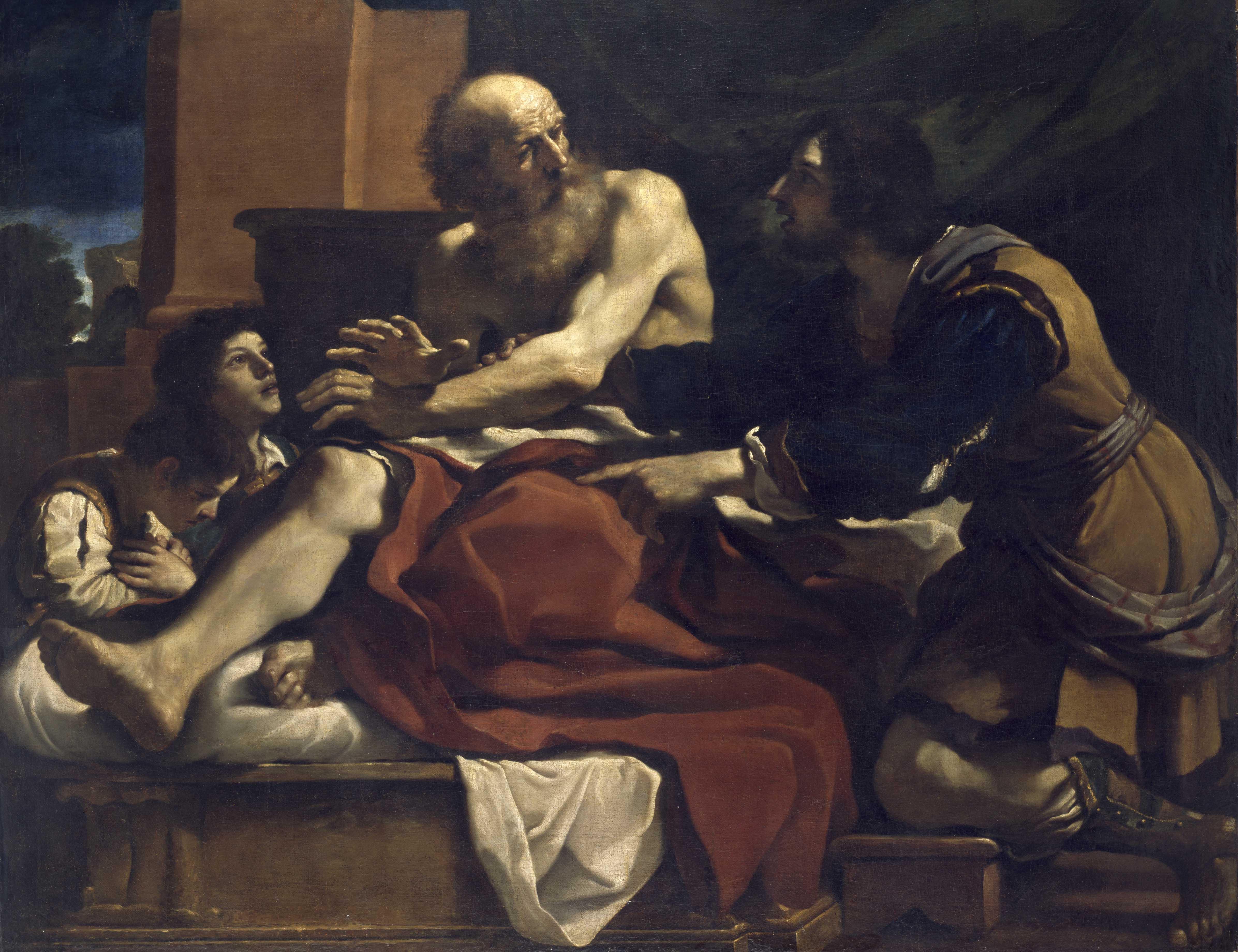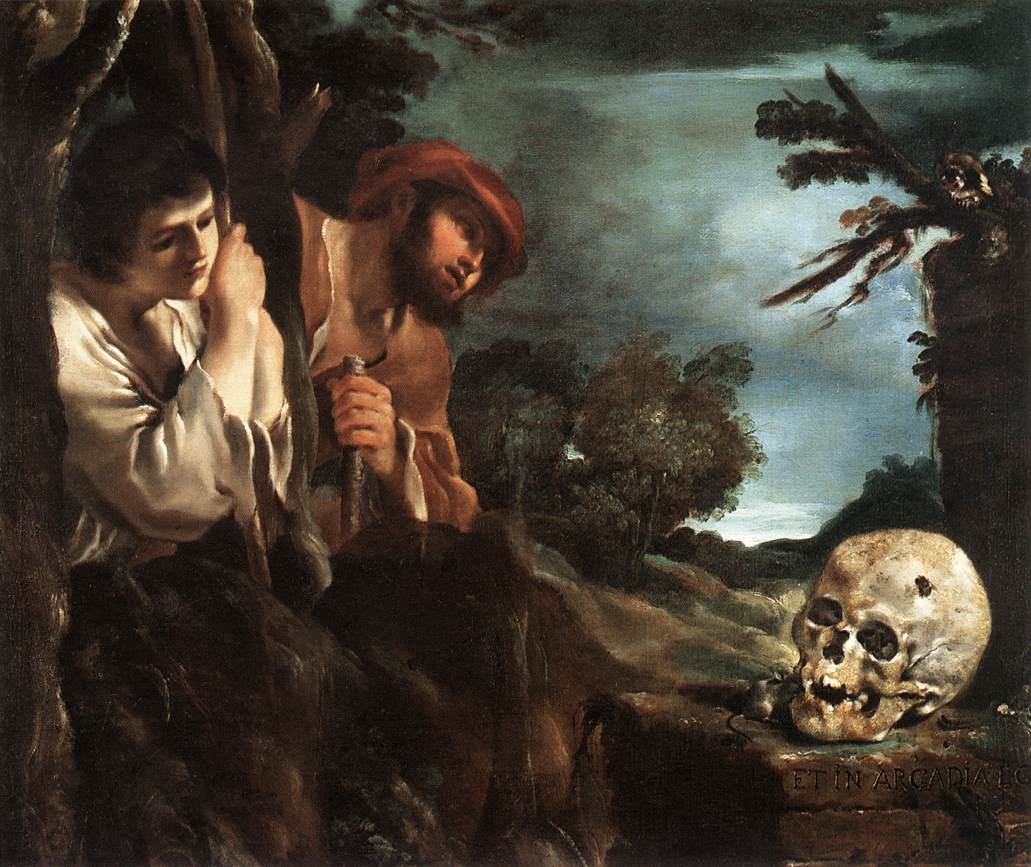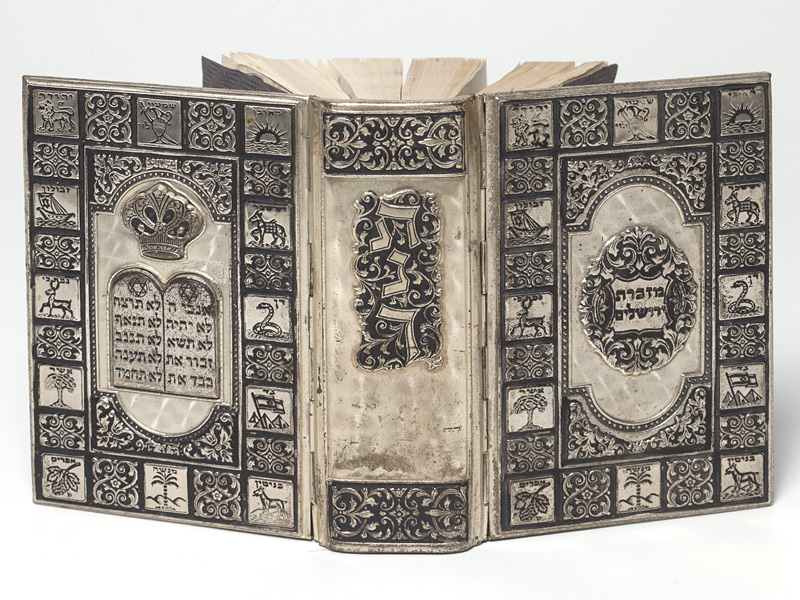|
Vayechi
Vaychi, Vayechi or Vayhi ( — Hebrew for "and he lived," the first word of the parashah) is the twelfth weekly Torah portion (, ''parashah'') in the annual Jewish cycle of Torah reading and the last in the Book of Genesis. It constitutes . The parashah tells of Jacob's request for burial in Canaan, Jacob's blessing of Joseph's sons Ephraim and Manasseh, Jacob's blessing of his sons, Jacob's death and burial, and Joseph's death. It is the shortest weekly Torah portion in the Book of Genesis (although not in the Torah). It is made up of 4,448 Hebrew letters, 1,158 Hebrew words, 85 verses, and 148 lines in a Torah scroll. Unlike other parashahs, Vaychi does not begin after a space or on a new line. Jews read it the twelfth Sabbath after Simchat Torah, generally in December or January. Readings In traditional Sabbath Torah reading, the parashah is divided into seven readings, or , '' aliyot''. In the Masoretic Text of the Tanakh (Hebrew Bible), Parashat Vayechi has 12 "open porti ... [...More Info...] [...Related Items...] OR: [Wikipedia] [Google] [Baidu] |
Parashah
The term ''parashah'' ( he, פָּרָשָׁה ''Pārāšâ'', "portion", Tiberian , Sephardi , plural: ''parashot'' or ''parashiyot'', also called ''parsha'') formally means a section of a biblical book in the Masoretic Text of the Tanakh (Hebrew Bible). In common usage today the word often refers to the Weekly Torah portion (a shortened form of ''Parashat HaShavua''). This article deals with the first, formal meaning of the word. In the Masoretic Text, ''parashah'' sections are designated by various types of spacing between them, as found in Torah scrolls, scrolls of the books of Nevi'im or Ketuvim (especially the Megillot), masoretic codices from the Middle Ages and printed editions of the masoretic text. The division of the text into ''parashot'' for the biblical books is independent of chapter and verse numbers, which are not part of the masoretic tradition. ''Parashot'' are not numbered, but some have special names. The division of ''parashot'' found in the modern-day To ... [...More Info...] [...Related Items...] OR: [Wikipedia] [Google] [Baidu] |
Weekly Torah Portion
It is a custom among religious Jewish communities for a weekly Torah portion to be read during Jewish prayer services on Monday, Thursday, and Saturday. The full name, ''Parashat HaShavua'' ( he, פָּרָשַׁת הַשָּׁבוּעַ), is popularly abbreviated to ''parashah'' (also ''parshah'' or parsha), and is also known as a Seder (Bible), Sidra or Sedra . The ''parashah'' is a section of the Torah (Five Books of Moses) used in Jewish liturgy during a particular week. There are 54 parshas, or ''parashiyot'' in Hebrew, and the full cycle is read over the course of one Jewish year. Content and number Each Torah portion consists of two to six chapters to be read during the week. There are 54 weekly portions or ''parashot''. Torah reading mostly follows an annual cycle beginning and ending on the Jewish holiday of Simchat Torah, with the divisions corresponding to the lunisolar calendar, lunisolar Hebrew calendar, which contains up to 55 weeks, the exact number varying betwe ... [...More Info...] [...Related Items...] OR: [Wikipedia] [Google] [Baidu] |
Book Of Genesis
The Book of Genesis (from Greek ; Hebrew: בְּרֵאשִׁית ''Bəreʾšīt'', "In hebeginning") is the first book of the Hebrew Bible and the Christian Old Testament. Its Hebrew name is the same as its first word, ( "In the beginning"). Genesis is an account of the creation of the world, the early history of humanity, and of Israel's ancestors and the origins of the Jewish people. Tradition credits Moses as the author of Genesis, as well as the books of Exodus, Leviticus, Numbers and most of Deuteronomy; however, modern scholars, especially from the 19th century onward, place the books' authorship in the 6th and 5th centuries BC, hundreds of years after Moses is supposed to have lived.Davies (1998), p. 37 Based on scientific interpretation of archaeological, genetic, and linguistic evidence, most scholars consider Genesis to be primarily mythological rather than historical. It is divisible into two parts, the primeval history (chapters 1–11) and the ancestr ... [...More Info...] [...Related Items...] OR: [Wikipedia] [Google] [Baidu] |
Joseph (Genesis)
Joseph (; he, יוֹסֵף, , He shall add; Standard: ''Yōsef'', Tiberian: ''Yōsēp̄''; alternatively: יְהוֹסֵף, lit. 'Yahweh shall add'; Standard: ''Yəhōsef'', Tiberian: ''Yŏhōsēp̄''; ar, يوسف, Yūsuf; grc, Ἰωσήφ, Iōsēph) is an important figure in the Bible's Book of Genesis. He was the first of the two sons of Jacob and Rachel (Jacob's twelfth child and eleventh son). He is the founder of the Israelite Tribe of Joseph. His story functions as an explanation for Israel's residence in Egypt. He is the favourite son of the patriarch Jacob, and his jealous brothers sell him into slavery in Egypt, where he eventually ends up incarcerated. After correctly interpreting the dreams of Pharaoh, however, he rises to second-in-command in Egypt and saves Egypt during a famine. Jacob's family travel to Egypt to escape the famine, and it is through him that they are given leave to settle in the Land of Goshen (the eastern part of the Nile Delta). The compo ... [...More Info...] [...Related Items...] OR: [Wikipedia] [Google] [Baidu] |
Guercino Jacob Ephraim And Manasseh
Giovanni Francesco Barbieri (February 8, 1591 – December 22, 1666),Miller, 1964 better known as Guercino, or il Guercino , was an Italian Baroque painter and draftsman from Cento in the Emilia-Romagna, Emilia region, who was active in Rome and Bologna. The vigorous naturalism of his early manner contrasts with the classical equilibrium of his later works. His many drawings are noted for their luminosity and lively style. Biography Giovanni Francesco Barbieri was born into a family of peasant farmers in Cento, a town in the Po Valley mid-way between Bologna and Ferrara.Mahon, 1937a Being Strabismus, cross-eyed, at an early age he acquired the nickname by which he is universally known, Guercino (a diminutive of the Italian noun ''wikt:guercio, guercio'', meaning 'squinter').Turner, 2003 Mainly self-taught, at the age of 16, he worked as apprentice in the shop of Benedetto Gennari, a painter of the Bolognese School (painting), Bolognese School. An early commission was for the ... [...More Info...] [...Related Items...] OR: [Wikipedia] [Google] [Baidu] |
Brooklyn
Brooklyn () is a borough of New York City, coextensive with Kings County, in the U.S. state of New York. Kings County is the most populous county in the State of New York, and the second-most densely populated county in the United States, behind New York County (Manhattan). Brooklyn is also New York City's most populous borough,2010 Gazetteer for New York State . Retrieved September 18, 2016. with 2,736,074 residents in 2020. Named after the Dutch village of Breukelen, Brooklyn is located on the w ... [...More Info...] [...Related Items...] OR: [Wikipedia] [Google] [Baidu] |
Tanakh
The Hebrew Bible or Tanakh (;"Tanach" ''''. : ''Tānāḵh''), also known in Hebrew as Miqra (; : ''Mīqrā''), is the canonical collection of script ... [...More Info...] [...Related Items...] OR: [Wikipedia] [Google] [Baidu] |
Hebrew Bible
The Hebrew Bible or Tanakh (;"Tanach" ''Random House Webster's Unabridged Dictionary''. Hebrew: ''Tānāḵh''), also known in Hebrew as Miqra (; Hebrew: ''Mīqrā''), is the Biblical canon, canonical collection of Hebrew language, Hebrew scriptures, including the Torah, the Nevi'im, and the Ketuvim. Different branches of Judaism and Samaritanism have maintained different versions of the canon, including the 3rd-century Septuagint text used by Second-Temple Judaism, the Syriac language Peshitta, the Samaritan Torah, the Dead Sea Scrolls, and most recently the 10th century medieval Masoretic Text, Masoretic text created by the Masoretes currently used in modern Rabbinic Judaism. The terms "Hebrew Bible" or "Hebrew Canon" are frequently confused with the Masoretic text, however, this is a medieval version and one of several ... [...More Info...] [...Related Items...] OR: [Wikipedia] [Google] [Baidu] |
Pe (Semitic Letter)
Pe is the seventeenth letter of the Semitic abjads, including Phoenician Pē , Hebrew Pē , Aramaic Pē , Syriac Pē ܦ, and Arabic (in abjadi order). The original sound value is a voiceless bilabial plosive: ; it retains this value in most Semitic languages, except for Arabic, where the sound changed into the voiceless labiodental fricative , carrying with it the pronunciation of the letter. Not to be confused with the Turned g. The Phoenician letter gave rise to the Greek Pi (Π), Latin P, and Cyrillic П. Origins Pe is usually assumed to come from a pictogram of a “mouth” (in Hebrew ''pe''; in Arabic, فا ''fah''). Hebrew Pe The Hebrew spelling is . It is also romanized pei or pey, especially when used in Yiddish. Variations on written form/pronunciation The letter Pe is one of the six letters which can receive a Dagesh Kal. The six are Bet, Gimel, Daleth, Kaph, Pe, and Tav. Variant forms of Pe/Fe A notable variation on the letter Pe is the Pe Kefulah ( ... [...More Info...] [...Related Items...] OR: [Wikipedia] [Google] [Baidu] |
Samekh
Samekh (Phoenician ''sāmek'' ; Hebrew ''samekh'' , Syriac ''semkaṯ'') is the fifteenth letter of the Semitic abjads, including the Hebrew alphabet. Samekh represents a voiceless alveolar fricative . Unlike most Semitic consonants, the pronunciation of remains constant between vowels and before voiced consonants. In the Hebrew language, the samekh generally shares a similar pronunciation as the left-dotted shin. The numerical value of samekh is 60. History The Phoenician letter may continue a glyph from the Middle Bronze Age alphabets, either based on a hieroglyph for a tent peg or support, possibly the ''djed'' "pillar" hieroglyph (c.f. Hebrew root סמך s-m-kh 'support', סֶמֶךְ semekh 'support, rest', סוֹמֵךְ somekh 'support peg, post', סוֹמְכָה somkha 'armrest', סָמוֹכָה smokha 'stake, support', indirectly '' s'mikhah'' ; Aramaic סַמְכָא samkha 'socket, base', סְמַךְ smakh 'support, help'; Syriac ܣܡܟܐ semkha 'support') ... [...More Info...] [...Related Items...] OR: [Wikipedia] [Google] [Baidu] |
Rembrandt Harmensz
Rembrandt Harmenszoon van Rijn (, ; 15 July 1606 – 4 October 1669), usually simply known as Rembrandt, was a Dutch Golden Age painter, printmaker and draughtsman. An innovative and prolific master in three media, he is generally considered one of the greatest visual artists in the history of art and the most important in Dutch art history.Gombrich, p. 420. Unlike most Dutch masters of the 17th century, Rembrandt's works depict a wide range of style and subject matter, from portraits and self-portraits to landscapes, genre scenes, allegorical and historical scenes, biblical and mythological themes and animal studies. His contributions to art came in a period of great wealth and cultural achievement that historians call the Dutch Golden Age, when Dutch art (especially Dutch painting), whilst antithetical to the Baroque style that dominated Europe, was prolific and innovative. This era gave rise to important new genres. Like many artists of the Dutch Golden Age, such as ... [...More Info...] [...Related Items...] OR: [Wikipedia] [Google] [Baidu] |
ArtScroll
ArtScroll is an imprint of translations, books and commentaries from an Orthodox Jewish perspective published by Mesorah Publications, Ltd., a publishing company based in Rahway, New Jersey. Rabbi Nosson Scherman is the general editor. ArtScroll's first president, Rabbi Meir Zlotowitz (July 13, 1943 – June 24, 2017) was succeeded by his oldest son, Rabbi Gedaliah Zlotowitz, whose name is listed secondarily in new publications as general editor, after that of Rabbi Scherman. History In 1975, Rabbi Meir Zlotowitz, a graduate of Mesivtha Tifereth Jerusalem, was director of a high-end graphics studio in New York. The firm, ArtScroll Studios, produced ketubahs, brochures, invitations, and awards. Rabbi Nosson Scherman, then principal of Yeshiva Karlin Stolin Boro Park, was recommended to Zlotowitz as someone who could write copy, and they collaborated on a few projects. In late 1975, Zlotowitz wrote an English translation and commentary on the Book of Esther in memory of a friend, ... [...More Info...] [...Related Items...] OR: [Wikipedia] [Google] [Baidu] |

.jpg)





